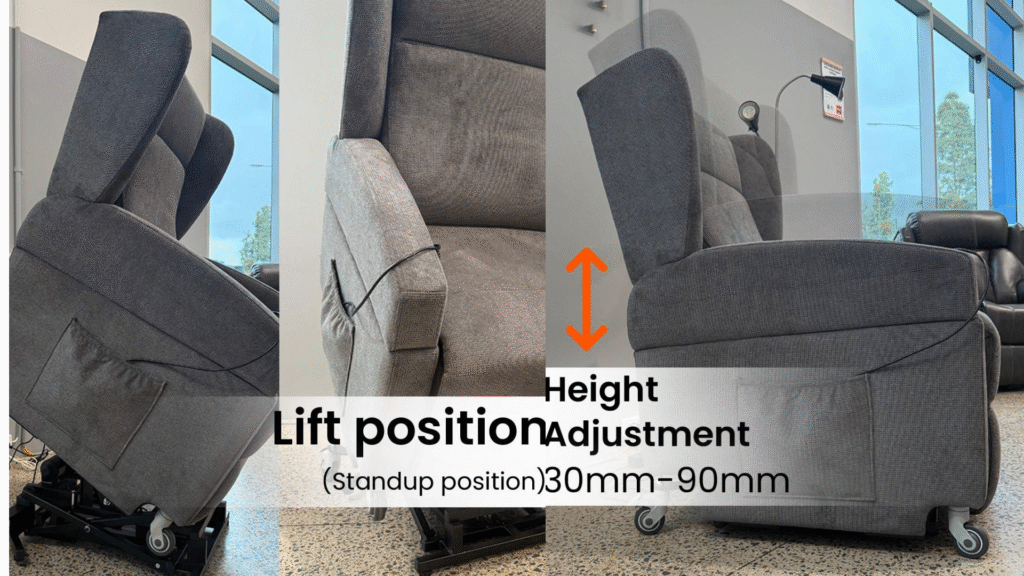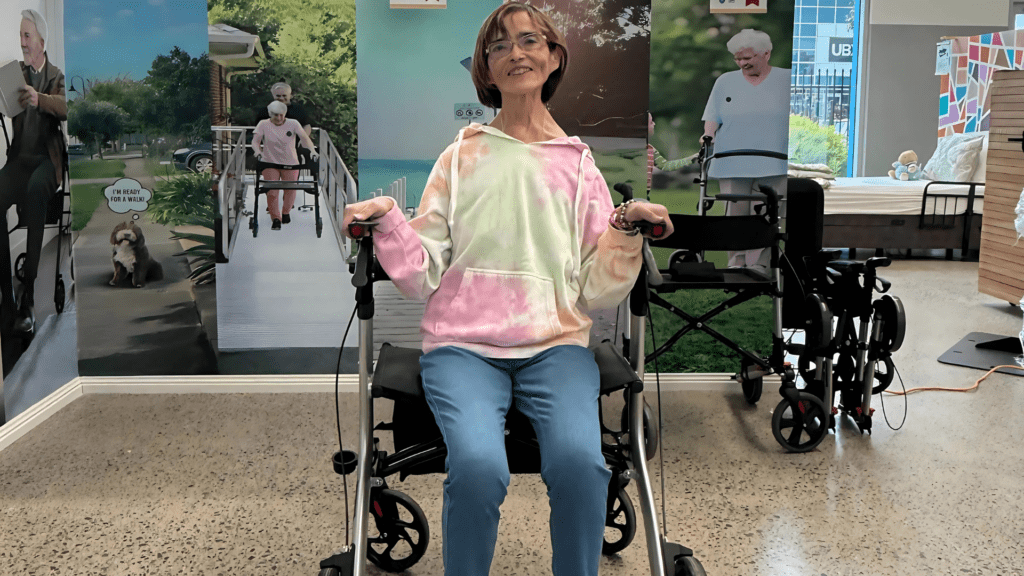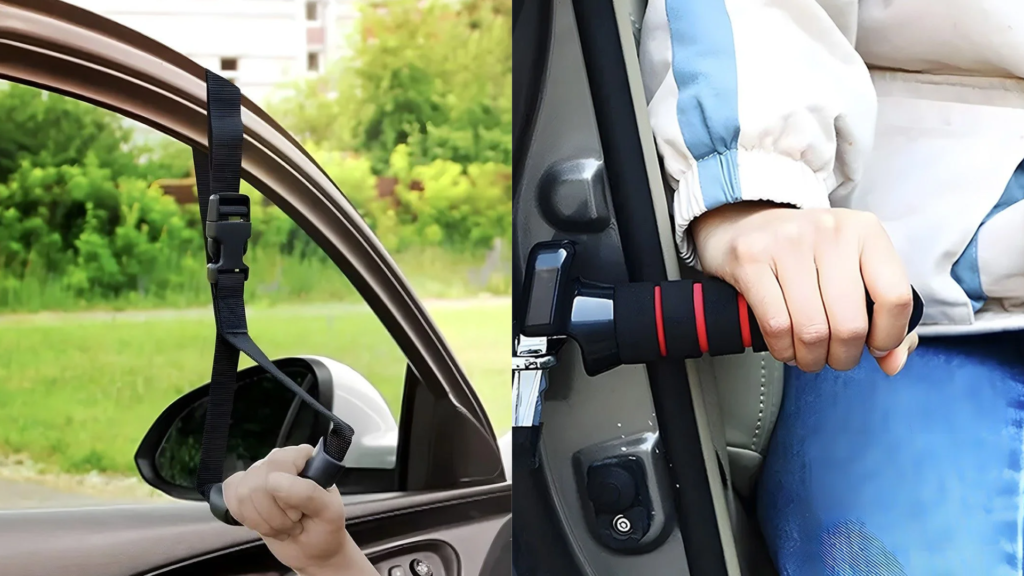Prolonged sitting or lying down can lead to one of the most common and painful complications faced by elderly individuals: pressure sores. For seniors with limited mobility, a quality mobility recliner chair can make a significant difference in both comfort and skin health.
In this guide, we explore how the right mobility recliner chairs can help reduce and prevent pressure sores, the features to look for, and options that are available through NDIS and SWEP funding.
Understanding Pressure Sores in Elderly Populations
Pressure sores—also known as pressure injuries or bedsores—occur when prolonged pressure on the skin reduces blood flow, damaging skin and underlying tissues. Common areas affected include:
- Heels
- Tailbone and hips
- Shoulders and elbows
- Back of the head
Elderly people, especially those who sit or lie down for long periods due to mobility limitations or chronic illness, are most at risk.
Risk factors include:
- Reduced mobility
- Frail or thin skin
- Poor circulation
- Inability to shift weight without assistance
For these individuals, mobility recliner chairs are not just for comfort—they’re vital tools for postural support and pressure relief.
How Recliner Chairs Can Aid in Pressure Management
A quality recliner can help prevent pressure sores through a combination of postural support, pressure redistribution, and frequent repositioning.
Key Benefits:
- Reclining and tilt-in-space functions allow frequent weight shifts without user effort
- Soft, contoured padding reduces pressure on high-risk areas
- Adjustable backrest and leg support help improve circulation
- Rise-assist features reduce strain during transfers, lowering fall risk
Used properly, recliners provide consistent postural variation, keeping the body supported and reducing friction, shear, and constant pressure.
Key Recliner Features for Pressure Relief
When choosing a mobility recliner for elderly users at risk of skin breakdown, look for these essential features:
1. Tilt-in-Space and Independent Recline
- Changes posture without increasing pressure on the back or thighs
- Encourages blood flow and tissue oxygenation
- Especially important for non-weight-bearing users
2. Contoured and Pressure-Relief Cushioning
- High-density foam or memory foam padding distributes weight evenly
- Some recliners offer integrated pressure-relieving gel layers
3. Adjustable Headrest and Lumbar Support
- Supports spinal alignment and reduces shear on bony areas
- Reduces the need for frequent repositioning by carers
4. Riser Function
- Assists seniors in transitioning from sitting to standing
- Reduces dependence and helps maintain independence in the home
5. Breathable, Waterproof Upholstery
- Easy to clean and gentle on sensitive skin
- Reduces risk of moisture-related skin damage
Recommended Products for Seniors in Aged Care
Hi-Low Power Recliner Chair
- Electric adjustment with smooth tilt and recline
- Reinforced frame with high-density pressure-relieving foam
- Suitable for seniors at risk of developing sores or requiring 24-hour seating support
- Ideal for both home settings and residential aged care facilities
Explore more options in our Mobility Recliner Chair Collection.
NDIS and SWEP Funding Considerations
Can NDIS Cover Pressure-Relief Recliner Chairs
Yes. NDIS may fund assistive seating solutions that are clinically recommended for pressure management.
Funding Pathway:
- An Occupational Therapist must assess the user and justify the recliner’s medical necessity
- The recliner is classified under Assistive Technology – AT Level 3 or 4, depending on complexity
- Your plan manager or support coordinator can help with quotes and approval
What About SWEP in Victoria
The Statewide Equipment Program supports eligible Victorian residents who are:
- Not covered by NDIS
- Living with permanent or long-term disability
- In need of essential mobility and seating support
SWEP can contribute to recliner purchase costs for at-risk seniors in aged care or home settings.
Need help navigating the process Contact our team or submit a product enquiry.
Conclusion
For elderly individuals living with reduced mobility, the right mobility recliner chair is more than a comfort item—it’s a proactive measure to prevent pressure sores, reduce pain, and maintain dignity.
- Choose recliners with pressure-distributing cushions, tilt functions, and rise-assist features
- Pair with an OT assessment to match needs and access NDIS or SWEP support
- Recliners can significantly reduce caregiver burden while improving senior quality of life
- Shop pressure-relief recliners
- Request a home trial or quote
- Speak with our team to find the right fit
Frequently Asked Questions (FAQs)
- Can recliners really help prevent pressure sores?
Yes. Recliners with tilt-in-space and pressure-relieving cushioning help redistribute body weight, reducing skin breakdown. - Are electric recliners better than manual for elderly users?
Electric recliners are easier to adjust, require no physical strength, and often come with extra features like rise-assist and independent leg movement—ideal for seniors with limited mobility. - How do I know if my parent needs a recliner for pressure management?
If they spend most of their day seated, have thin or fragile skin, or have a history of pressure sores, consult an OT. A recliner may be recommended for prevention. - Is funding available through the NDIS or SWEP?
Yes. With a clinical recommendation, recliners may be covered as Assistive Technology by both programs. - What is the average delivery time for recliner chairs?
Delivery typically takes 5–10 business days, depending on the product and location. Some recliners may require OT customisation before dispatch.



